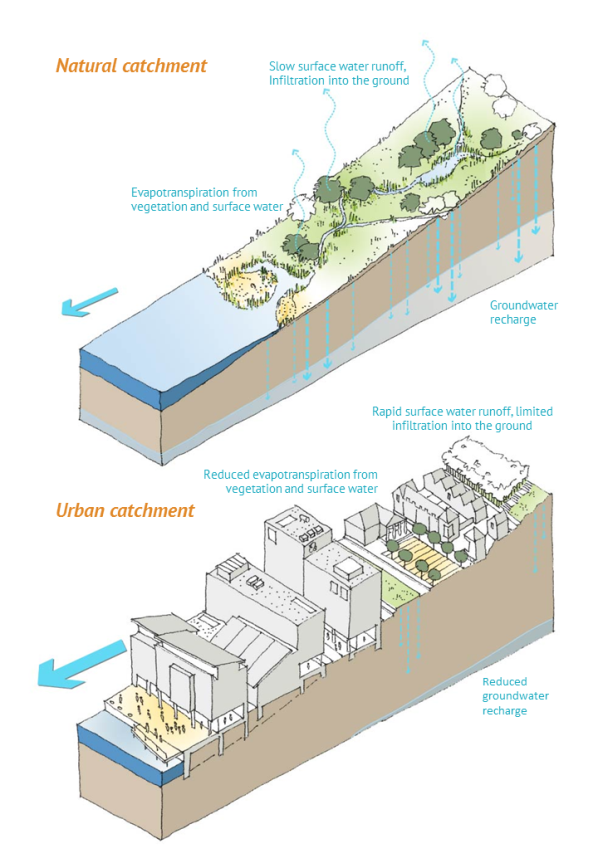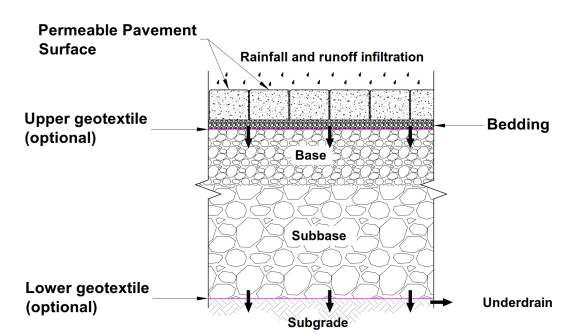E-Mail: elliot@ecpbuildinglandscaping.co.uk TEL: 01254 806769
Drainage Solutions: Leaving our Clients High and Dry

Above: Diagram produced by industry body ‘Susdrain’ depicting the different rates of surface water infiltration between the natural and urban catchments.
SUDS
Surface water management is an often neglected aspect of paving design which goes beyond just achieving the correct falls on a patio. A key design philosophy to help us navigate this subject is ‘Sustainable Urban Drainage Systems’- or SUDS for short.
At the core of SuDS is a recognition that the traditional way we design the built environment places too much emphasis on conveying excess rainwater through drainage infrastructure into streams and rivers where it will contribute to flooding downstream. We can think of this as making our rainfall someone else’s problem (not very neighbourly, eh?).
We’ve all seen the consequences of this, be it the water pooling around drainage grates at the end of the street or the local waterway threatening to swamp homes and businesses during heavy rainfall. To help reduce these events, the SUDS philosophy stipulates various forms of control which enable homeowners, developers and local governments to mange rainwater locally.
SUDS Control Measures
Chief among the control measures is source control. Essentially, this means allowing the rainwater to filter into the ground where it falls. Traditional paving solutions such as natural stone, asphalt and concrete prevent this by blocking the passage of water into the ground and are thus ‘impervious’. Therefore, SUDS encourages the use of ‘pervious’ paving which allows the passage of water into the ground, minimising discharge.
A wide array of SUDS compliant solutions are available to suit the needs of all projects, from driveways and patios to garden paths. Popular options include: block paving, gravel and permeable pavers. But perhaps the best practise is to minimise paving where it makes sense: favouring quality soft landscaping.
Pervious paving is enjoying widespread use on newbuild housing estates across the country as part of ‘Surface Water Management Plans’ created in line with legislation such as the Flood and Water Management Act 2010. Such considerations are increasingly key in attaining planning consent for projects small and large creating a legal impetus which is hard to ignore.
Large projects are likely to go a step further than ‘source control’ with ‘site control’ features which are now ubiquitous to the newbuild estates. A key example of this is the ‘retention basin’, storing water in a lake/pond from which it can evaporate without ever leaving the site.


Above: Diagram depicting the construction details of SUDS compliant block paving.
Where does this leave you?
SUDS is a tool kit and so there is no one size fits all solution. Measures implemented will vary significantly between projects and depend on factors such as site conditions and scale.
For most of our domestic clients there will be no specific requirements outlined under the law, but they may choose to incorporate the philosophy into their design in recognition of its benefits.
Looking to start your paving project in the Ribble Valley? Get in touch with Elliot on 01200 374419 or through our contact form to arrange a free visit.
